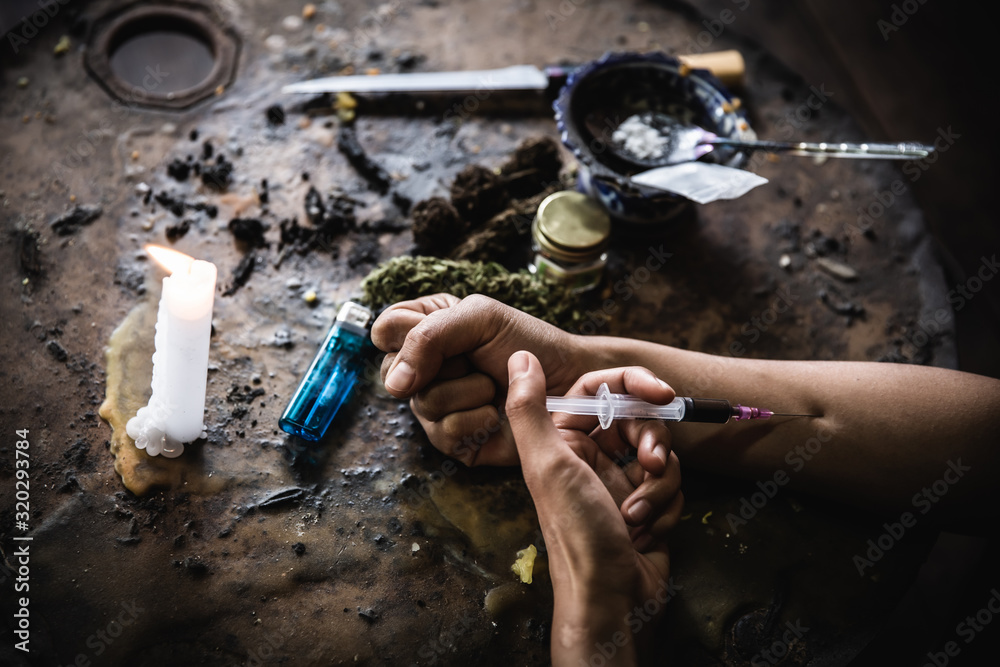
Kashmir’s Drugs Crisis: A Generation at Risk
A Generation Lost to Drug Abuse
By: Javid Amin
The Kashmir Valley is in the midst of a concerning trend – it is progressively evolving into a focal point for drug activity in Northern India. This issue was brought to the forefront on 4th August 2023 when the Standing Committee on Social Justice and Empowerment delivered a stark message to the Parliament of India. The committee’s report estimated that approximately 13.50 lakh individuals in Jammu and Kashmir are engaged in drug use, with the majority falling within the age range of 18 to 75 years.
To dive deeper into these statistics, the Standing Committee, comprised of 27 Members from Lok Sabha and Rajya Sabha, identified a total of 1,68,700 minor drug abusers in this region. Among them, 8,000 are using cannabis, 95,000 are using opioids, 19,000 are using sedatives, 100 are using cocaine, 400 are using Amphetamine Stimulants, 46,000 are using inhalants, and 200 are using Hallucinogens.
The gravity of the situation becomes even more apparent when we look at the 18-75 age group, where 11,80,000 adult drug abusers were identified. Within this group, 3,54,000 are using alcohol, 1,36,000 are using cannabis, 4,47,000 are using opioids, 1,51,000 are using sedatives, 89,000 are using inhalants, and there are 1,000 users each of Cocaine, stimulants, and Hallucinogens.
This alarming number of drug abusers has cast a shadow over the region. In recent years, drug abuse in the Union Territory has escalated into a major crisis. The latest statistics reveal that nearly 10 percent of the population is grappling with drug addiction.
The Unsettling Substances
The primary substances circulating in the illicit market in the region are heroin, cannabis, ganja, opium, and buprenorphine. Buprenorphine, originally a prescription medication for addressing Opioid Use Disorder (OUD), is accessible through addiction treatment centers but has unfortunately found its way into the black market. Additionally, medicinal opioids like Tapentadol, various forms of Tramadol, and synthetic drugs are progressively making their presence felt in Kashmir.
Emerging Trends
A study conducted by the United Nations Drug Control Programme (UNDCP) in 2018 focused on individuals aged 11 to 25 in Jammu and Kashmir. This study revealed that the most commonly abused substances were a combination of multiple substances (38.9%), followed by opioids (27.26%), cannabis (24.14%), inhalants (11.1%), alcohol (4.17%), Benzodiazepines (2.46%), and nicotine (1.55%).
The detrimental effects of substance abuse among the youth in Jammu and Kashmir have reached a critical stage, affecting individuals across all social and economic backgrounds. There has been a notable surge in cases related to smuggling, trafficking, distribution, and misuse of narcotic drugs and psychotropic substances, particularly in Kashmir. Moreover, there has been a shift in the types and characteristics of substances being abused, transitioning from cannabis to heroin and other synthetic drugs.
In 2023, a study conducted by IMHANS revealed that the prevalence of Hepatitis C among drug abusers in Kashmir is 72 percent. The institute received 150 drug addiction cases per day. It also found that over 33 thousand syringes are being used daily for heroin injections.
The magnitude of this problem can also be gauged from the fact that the demand for facilities for the treatment and rehabilitation of drug addicts has increased manifold. A Youth Development and Rehabilitation Centre (YDRC), with a capacity of 50 beds and state-of-the-art facilities, is the largest de-addiction centre in Kashmir run by the Jammu and Kashmir Police in Srinagar. It has been helping the youth involved in drugs since 2008. Initially, this centre had a capacity of 5 beds. In view of growing demands, its capacity had to be subsequently increased. The Ministry of Home Affairs has allocated special funds under security-related expenditure (SRE) for the upgradation of this Centre.
In light of the increased number of patients requiring treatment, two subsidiary Drug De-Addiction Centres were also opened by Jammu and Kashmir Police in the District Police Lines (DPL) of Baramulla and Anantnag to meet the demand of the North and South Kashmir regions respectively.
YDRC has treated 32,069 patients in the OPD to date and rehabilitated 2964 patients in the IPD during the same period. In 2022, 2340 patients were counseled and treated in the OPD, and 270 patients were admitted and rehabilitated in the IPD. Another disturbing trend being witnessed in the Kashmir valley is that girls and young women are taking drugs in large numbers. YDRC receives 3 to 4 women patients every month.
What’s Behind This Disturbing Trend?
The Narcotic Drugs and Psychotropic Substances Act of 1985 (NDPS) strictly prohibits the cultivation of opium poppy unless it’s for specific medical or scientific purposes. This act enforces severe penalties for violations, ranging from up to one year of imprisonment for a violation involving a small quantity (up to 1 kilogram) to imprisonment between ten and twenty years for any involvement with a commercial quantity (up to 50 kilograms).
This law, however, seems to have not proven to be an effective deterrent for farmers in Kashmir. In the wake of the eruption of militancy in 1989, numerous farmers in the southern districts of Kashmir turned to cultivating poppy and bhang, while law enforcement agencies focused primarily on maintaining peace. Despite yearly efforts by authorities to eradicate these crops as the situation gradually stabilized, the impact on the ground has been minimal. According to officials from the excise department, the cultivation of these crops is most widespread in the Pulwama, Anantnag, Budgam, and Kupwara districts of Kashmir.
An additional factor contributing to the surge in drug availability in Kashmir is the smuggling of drugs by terrorist groups based in Pakistan, using couriers and drones to transport them across the border. This form of narco-terrorism has emerged as a significant means of financing terrorism in the Kashmir Valley, particularly following the government’s decision to halt cross-Line of Control (LOC) trade due to severe allegations of its misuse for funding anti-national elements involved in terrorist and separatist activities in the region.
Dilbag Singh, the Director General of Police (DGP) for Jammu and Kashmir, emphasized in a recent media interaction that police was grappling with a new challenge where both drugs and weapons are being smuggled in from Pakistan simultaneously. While the weapons are delivered to the terrorists, a substantial portion of the proceeds from drug sales is sent back to handlers across the border, with the remainder shared among the local peddlers.
The Ongoing Battle
In an ever-changing world, many of us are contending with increasing levels of stress and mental health issues, such as depression and anxiety, which have become quite prevalent. How we choose to cope with stress significantly impacts our overall well-being. Some adopt healthy lifestyle practices like yoga or meditation, while others find solace in activities like music or sports. Unfortunately, a significant portion of the population in all societies turns to detrimental habits like tobacco, alcohol, or narcotics.
Consuming alcohol is deemed haram in Islam and is also socially stigmatized in the closed, endogamous society of Kashmir. Due to socio-religious reasons, most Kashmiris abstain from alcohol consumption. Additionally, the limited availability of alcohol acts as another deterrent, with very few liquor outlets in operation in Kashmir. Most of the hotels, including five-star establishments, refrain from serving alcohol due to security concerns arising from threats posed by terrorists.
Until about two decades ago, tobacco smoking was the primary source of intoxication for Kashmiris. Unsurprisingly, the Kashmir Valley constitutes the most lucrative market for cigarette manufacturers, including companies like ITC and Godfrey Phillips India.
In recent times, due to the influx of drugs through cross-border smuggling, obtaining narcotic substances in Kashmir has become quite easy. What’s surprising is that even individuals who consider themselves devout Muslims don’t hesitate to partake in it for various reasons. Firstly, unlike alcohol, it lacks a strong odor, making it harder for family members to detect. Secondly, hard drugs deliver a much more potent intoxication compared to liquor. Thirdly, drugs are easily concealable and can be consumed discreetly. Finally, drugs do not have a direct mention in the holy Quran.
This substance usage pattern in Jammu and Kashmir significantly differs from the national trend, where alcohol was the most prevalent substance (14.6%), followed by cannabis (2.8%), opiates (2.1%), sedatives (1.08%), and inhalants (0.7%). There has been a shift from cannabis to heroin consumption in the Kashmir Valley, with heroin now taking precedence over cannabis as the primary drug of choice. Various forms of heroin, such as Brown Sugar, Chetta (injectable heroin), Chasal (nasal heroin), and Tichuk (nasal heroin), are being consumed.
The Nexus of Terror and Drugs
The persistent financial and strategic support for terrorism in the Kashmir Valley by a hostile neighboring country, involving the training and infiltration of weapons and militants, has profoundly affected society. This Pakistan-backed terrorism has dismantled the centuries-old socioeconomic and sociocultural framework of the region. The loss of lives, mass displacement of Kashmiri Pandits, and rising unemployment have eroded the diverse way of life, leading to increased feelings of ennui, depression, and anxiety among the populace.
Now, as the people of Kashmir are increasingly turning away from terrorism and a culture of violence, the drug trade serves a dual purpose for terrorist groups. Firstly, it undermines the core of social well-being, and secondly, it provides funding for terrorism within the Valley. There has been a virtual collapse of the traditional informal social regulations and oversight upheld by village elders in the Kashmir Valley. The three-decade-long period of terrorism has inflicted significant harm on the cultural bedrock of the Valley, rendering its customary methods of social governance largely ineffective.
A Collective Effort to Overcome
Drug addiction poses a significant threat to the socio-economic well-being of Jammu and Kashmir. This highlights the pressing need for all stakeholders to unite in eliminating this problem and collectively work towards a drug-free Jammu and Kashmir. The Kashmiri society must engage in internal discussions and critically examine Pakistan’s policies, particularly those related to narco-terrorism, which contribute to unrest.
It is crucial for Kashmir’s elders and religious leaders, utilizing mosques as platforms, to actively participate in the battle against drugs and guide the youth towards meaningful involvement in the developmental initiatives launched by the national and Union territory governments in recent years. The government should also take steps to facilitate public-private partnerships, fostering cooperation between local police, military, paramilitary, and citizen groups to rid Kashmir of narco-terrorism and the culture of violence propagated by Pakistan-based terrorist organizations. Establishing a collaborative relationship between Kashmir’s traditional and formal social control systems can play a vital role in tackling the drug problem.
The road ahead is challenging, but with concerted efforts, it is possible to reclaim the beautiful region of Kashmir from the clutches of this drug crisis and build a brighter, healthier future for its people.

